Meet the Large, Red Crowned Pileated Woodpecker
Updated: Nov. 08, 2022
The red crowned pileated woodpecker is the largest woodpecker in North America. Learn about their call and sound, size and nests.
Our editors and experts handpick every product we feature. We may earn a commission from your purchases.
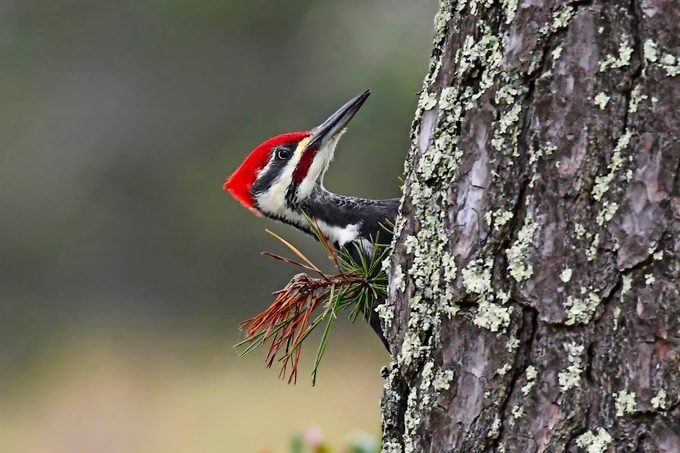
Pileated woodpeckers are large, graceful birds, and may be easier to attract than you thought. As big as a crow, the pileated woodpecker is the largest member of the woodpecker family in North America. Its name comes from the Latin word pileatus, which means “capped,” alluding to the bird’s conspicuous crest. Here’s all you need to know about these gorgeous red crowned woodpeckers.
Is the ivory-billed woodpecker related to the pileated woodpecker?
Males and Female Pileated Woodpecker
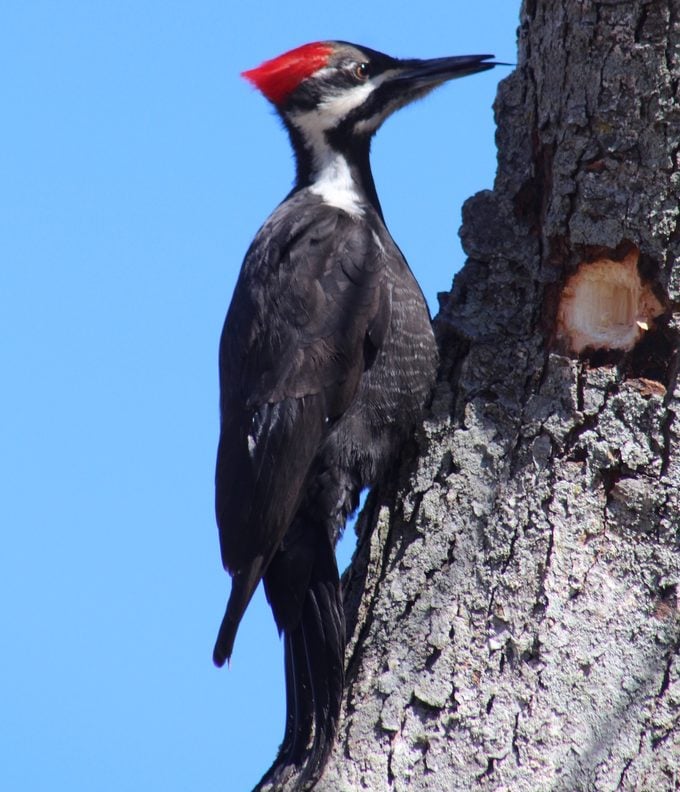
Pileated woodpeckers are big, bold and beautiful, sporting a flaming red crest, black wings and tail, expansive white underwings, and black and white stripes on the face and neck. Males show off an extra pop of red on each cheek known as a “mustache mark.” Females have less red on their face (their mustache is black), but still sport a bright red crest. The male’s crest extends to the top of the bill.
Learn how to identify a hairy woodpecker.
Pileated Woodpecker Size
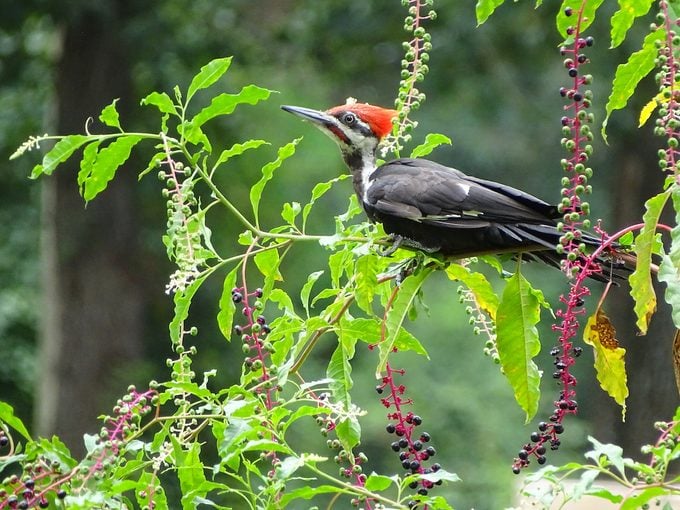
You won’t mistake this bird for a small downy woodpecker. This 16-to-19-inch-long bird is the largest woodpecker in North America. Their wingspan measures 29 inches. The ivory-billed woodpecker was larger, but is now considered extinct.
Meet the red headed woodpecker: redheads of the bird world.
Pileated Woodpecker Nest and Eggs
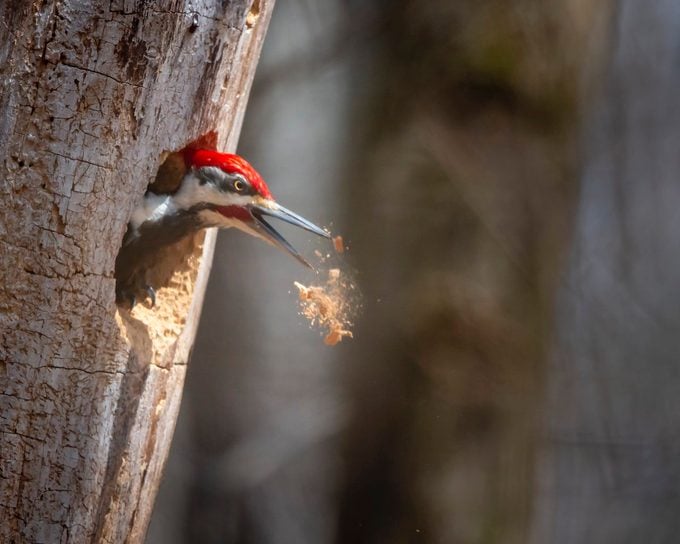
The mated pair creates a tree cavity. Using no nesting material, the female lays three to five white eggs. You can draw them in with the proper nesting habitat. Attract a breeding duo by leaving dead trees standing or by securing a substantially sized nest box to a living tree. Whether you buy a nest box or build your own, just make sure it’s 24 inches deep and about a foot wide and tall, with a 4-inch entry hole, and hang it 15 to 20 feet above ground.
Learn all about red bellied woodpeckers.
Do Pileated Woodpeckers Mate for Life?
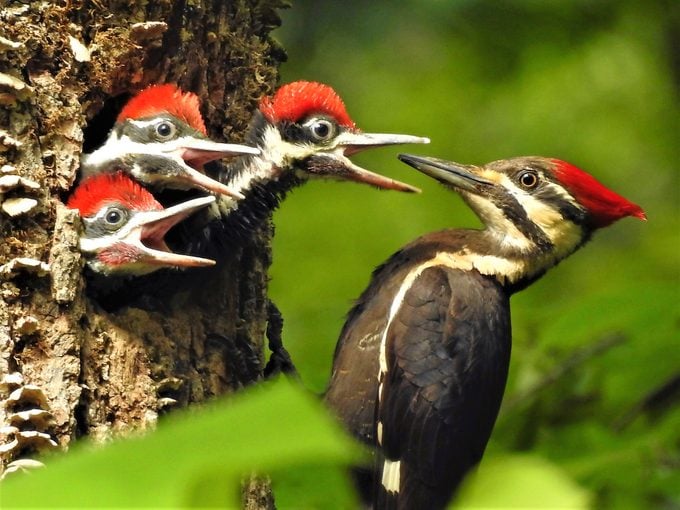
Male pileated woodpeckers kick off their courtship with a dance that includes bowing, scraping and stepping sideways in a circle around potential mates. When paired, they typically mate for life.
Learn about sapsucker birds: woodpeckers with a sweet tooth.
Juvenile Pileated Woodpeckers
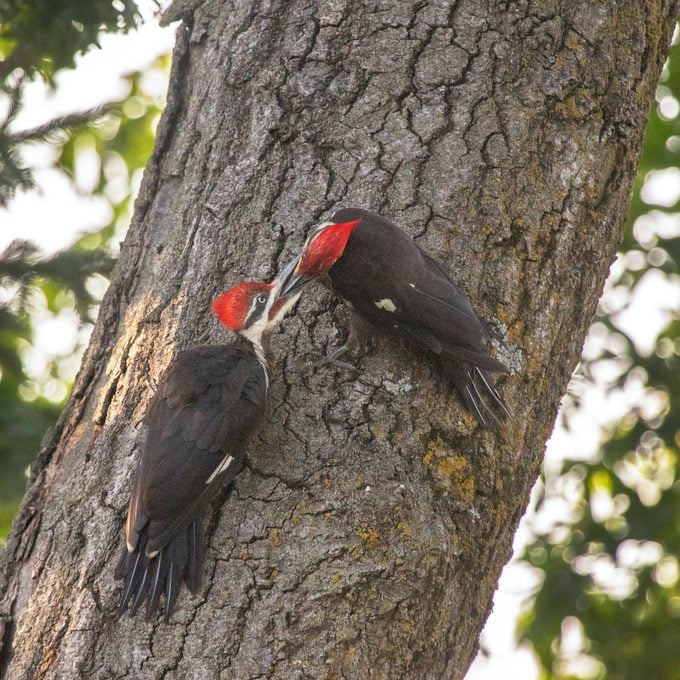
Question: Is it normal to see three pileated woodpeckers together? —Libba Fairleigh of Black Mountain, North Carolina
Kenn and Kimberly Kaufman: Seeing two pileated woodpeckers together is normal, because mated pairs often stay together on their territory all year. But it’s much more unusual to see three together. A few circumstances could explain this uncommon sighting, depending on the time of the year. In late summer or early fall, young pileated woodpeckers that hatched during the breeding season may still be associating with their parents. During winter, adults may be less defensive of their territory, so they sometimes allow intruders to linger.
“My husband and I have several bird feeders in our Rochester, Minnesota, yard, one of which is designed specifically for pileated woodpeckers. We have had a pair coming to our feeder for years now. Once their young fledge, the parents bring them to the feeder. The fledgling (above) will fly to a nearby oak tree and wait for the parent to bring suet to them from our feeder,” says Glenda Mueller.
What Do Pileated Woodpeckers Eat?
Their diet mostly consists of carpenter ants, as well as other insects, wild berries and acorns. At home in mature forests, pileated woodpeckers thrive when surrounded by dead trees and downed logs. They’re known for drilling large rectangular holes into tree trunks and thick branches as they search for wood-boring beetle larvae, carpenter ants, termites and more. They have long barbed tongues designed for scooping bugs out of trees. Once carved, the holes offer shelter to owls, swifts, ducks, bats and pine martens.
Check out the 4 best foods for attracting woodpeckers.
Do Pileated Woodpeckers Visit Bird Feeders?
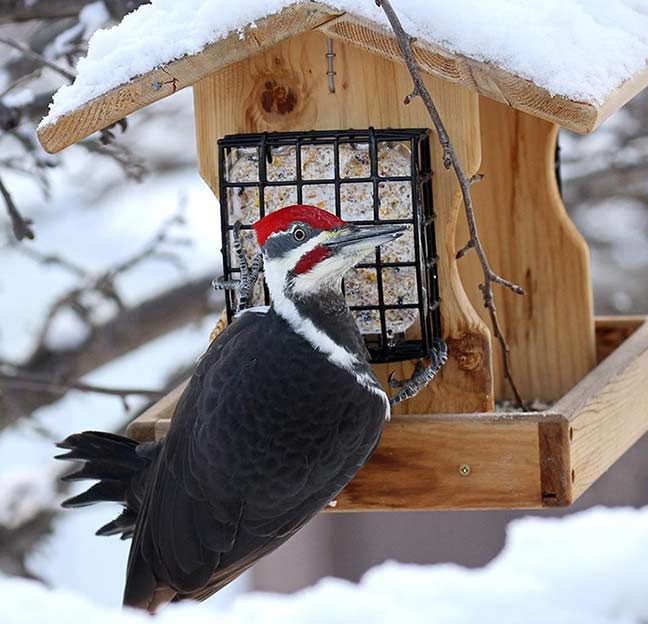
Question: I have a pileated woodpecker that comes to my suet feeder daily. I’ve never seen a pileated woodpecker at a feeder before now. Is this common? —Elaine Eikenberry of Spring Lake, Michigan
Kenn and Kimberly Kaufman: To have North America’s largest woodpecker visiting your feeders on a daily basis is very special, so congratulations! Generally speaking, pileated woodpeckers are wary and elusive, and in most places they do not make a habit of visiting bird feeders. In areas where they’re more abundant, these magnificent birds are gradually becoming more acclimated to the presence of humans, losing some of their wariness and becoming easier to see. A few have even discovered the benefits of bird feeders, but this is still an uncommon sight.
To attract pileated woodpeckers to feeders, set out suet, a high-calorie snack, in a bird feeder that’s large enough for these big woodpeckers. Choose a feeder with a long tail prop. Here are some of our favorite suet feeders and homemade suet recipes.
How These Big Birds Fly
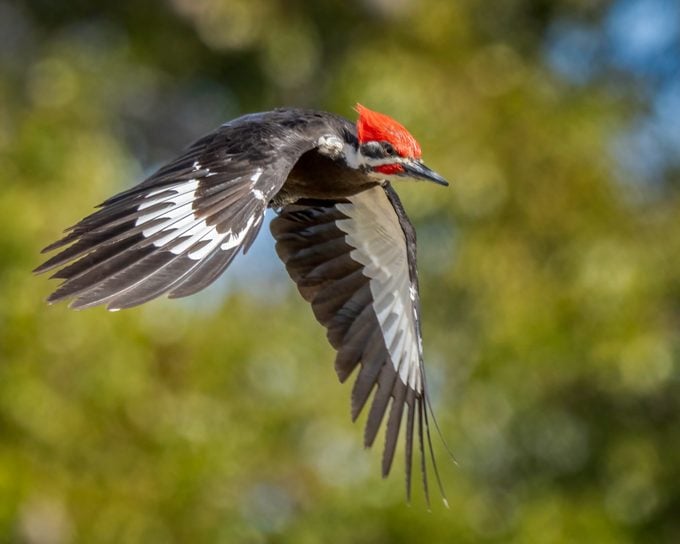
When in the air, the species “has this distinctive undulating flight where they flap, flap, flap, then drop,” says Keith Barker, a bird researcher and curator of genetic resources at the Bell Museum of Natural History at the University of Minnesota. “If you see something basically as big as a crow but flying that way, then it’s this woodpecker.”
Learn about acorn woodpeckers: ultimate stockpilers.
Pileated Woodpecker Call and Sound
Pileated woodpeckers produce deep loud cuk, cuk or wuk, wuk sounds and a long series of high, clear piping calls. Their territorial call is a higher-pitched cackle, “flick-a, flick-a, flick-a.”If one is nearby, you’ll know it!
Listen to the pileated woodpecker’s song.
Bird songs provided by the Cornell Lab of Ornithology.
Range Map and Habitat
Pileated woodpeckers are spotted year-round throughout the eastern half of the United States and along the West Coast. They prefer mature coniferous and deciduous forests and large tracts of mixed woodlands.“We often associate their decline with old-growth forests being cut down, which they are very dependent on,” says Sushma Reddy, curator of birds at the Bell Museum of Natural History. “If there’s a wooded area where people can leave dead branches on the ground, this supports biodiversity and may help to attract more birds.”
Pileated woodpeckers can be drawn to yards. They might roost or nest in dead or dying trees on your property, as well as empty nest boxes. Populations of this species have declined in the past. But luckily, the North American Breeding Bird Survey found a steady increase between 1966 and 2014.
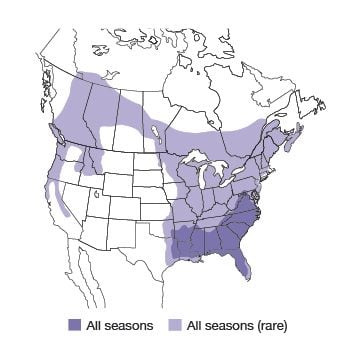
Range maps provided by Kaufman Field Guides, the official field guide of Birds & Blooms.
Next, meet northern flickers: unique, beautiful woodpeckers.
